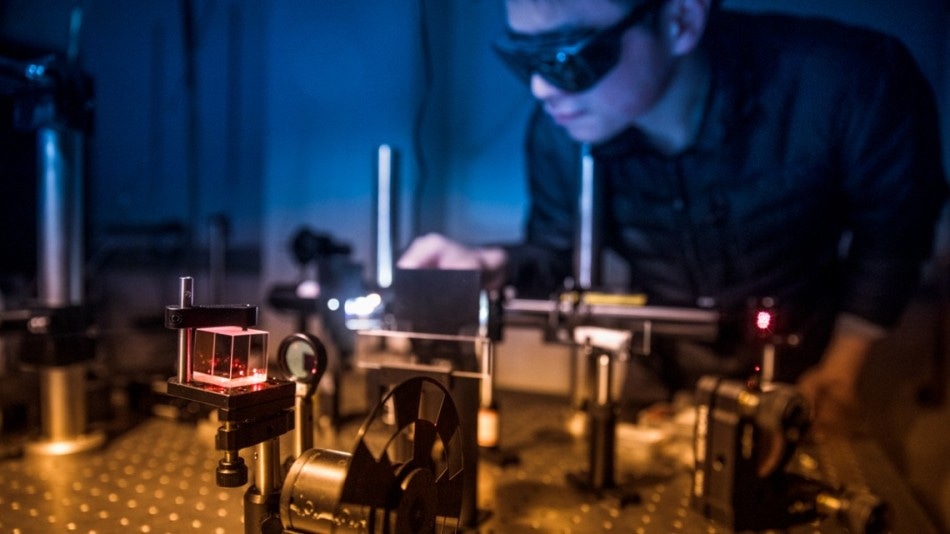Apr 5 2018
Researchers from the Cornell University have become the first to manipulate atomically thin magnets with an electric field, an innovation that provides a blueprint for creating remarkably powerful and efficient data storage in computer chips, among other applications.
 Shengwei Jiang, postdoctoral researcher, aligns an optical setup for magneto-optical Kerr rotation microscopy measurements on atomically thin magnets. (Image credit: Lindsay France/University Photography)
Shengwei Jiang, postdoctoral researcher, aligns an optical setup for magneto-optical Kerr rotation microscopy measurements on atomically thin magnets. (Image credit: Lindsay France/University Photography)
The research is explained in a paper titled, “Electric-field switching of two-dimensional van der Waals magnets,” which was published on March 12, 2018, in Nature Materials by Jie Shan, professor of applied and engineering physics; Kin Fai Mak, assistant professor of physics; and postdoctoral scholar Shengwei Jiang.
Back in 1966, Cornell physicist David Mermin and his postdoc Herbert Wagner hypothesized that 2D magnets could not exist if the spins of their electrons could point in any direction. It was only in 2017 that a few of the first 2D materials with correct alignment of spins were found, paving the way to a totally new group of materials termed as 2D van der Waals magnets.
Shan and Mak, who specialize in studying atomically thin materials, jumped at the chance to research the new magnets and their unique features.
If it’s a bulk material, you can’t easily access the atoms inside. But if the magnet is just a monolayer, you can do a lot to it. You can apply an electric field to it, put extra electrons into it, and that can modulate the material properties.
Kin Fai Mak
Making use of a sample of chromium triiodide, the researchers aimed to do just that. Their goal was to apply a small quantity of voltage to form an electric field and regulate the 2D compound’s magnetism, bestowing them the ability to turn it on and off.
To accomplish this, they stacked two atomic layers of chromium triiodide with atomically thin gate dielectrics and electrodes. This developed a field-effect device that could flip the electron-spin direction in the chromium triiodide layers using small gate voltages, triggering the magnetic switching. At temperatures below 57° Kelvin, the process is repeatable and reversible.
The discovery is a vital one for the future of electronics as “the majority of existing technology is based on magnetic switching, like in memory devices that record and store data,” said Shan. However, magnets in a majority of advanced electronics do not respond to an electric field. Instead, a current is transmitted through a coil, forming a magnetic field that can be used to turn the magnet on and off. It is an inefficient technique as the current produces heat and consumes electrical power.
Two-dimensional chromium-triiodide magnets have an exclusive advantage in that an electric field can be directly applied to trigger the switching, and very minimal energy is needed.
“The process is also very effective because if you have a nanometer thickness and you apply just one volt, the field is already 1 volt per nanometer. That’s huge,” said Shan.
The team plans to pursue exploring 2D magnets and expects to form new partnerships around campus, including with engineers and scientists who can assist them find new 2D magnetic materials that, unlike chromium triiodide, can function at room temperature.
In a sense, what we have demonstrated here is more like a device concept.When we find the right kind of material that can operate at a higher temperature, we can immediately apply this idea to those materials. But it’s not there yet.
Kin Fai Mak